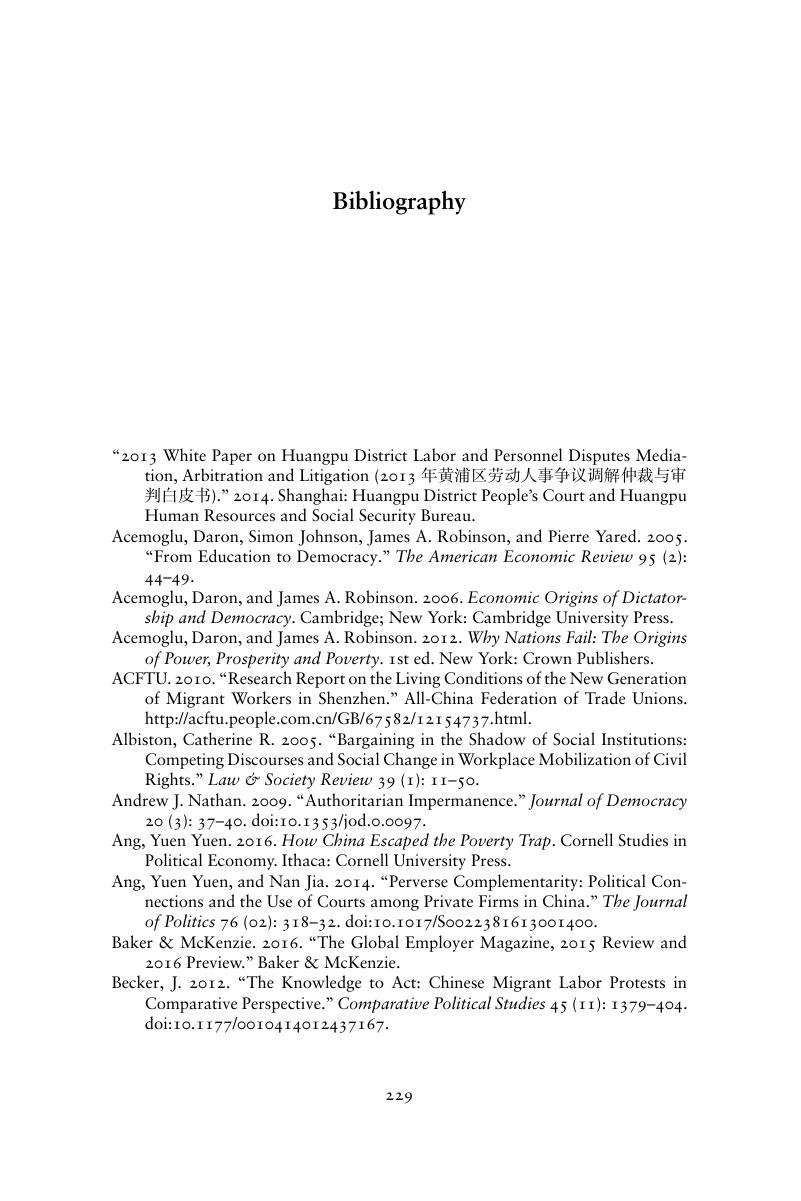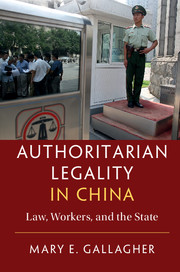Book contents
- Authoritarian Legality in China
- Authoritarian Legality in China
- Copyright page
- Dedication
- Contents
- Figures, Tables, and Charts
- Acknowledgments
- Abbreviations
- 1 Authoritarian Legality at Work
- 2 A Theory of Authoritarian Legality
- 3 Fire Alarms and Firefighters
- 4 By the Book
- 5 Great Expectations
- 6 The Limits of Authoritarian Legality
- Epilogue Requiem for the Labor Contract Law?
- Bibliography
- Index
- References
Bibliography
Published online by Cambridge University Press: 05 October 2017
- Authoritarian Legality in China
- Authoritarian Legality in China
- Copyright page
- Dedication
- Contents
- Figures, Tables, and Charts
- Acknowledgments
- Abbreviations
- 1 Authoritarian Legality at Work
- 2 A Theory of Authoritarian Legality
- 3 Fire Alarms and Firefighters
- 4 By the Book
- 5 Great Expectations
- 6 The Limits of Authoritarian Legality
- Epilogue Requiem for the Labor Contract Law?
- Bibliography
- Index
- References
Summary

- Type
- Chapter
- Information
- Authoritarian Legality in ChinaLaw, Workers, and the State, pp. 229 - 246Publisher: Cambridge University PressPrint publication year: 2017

